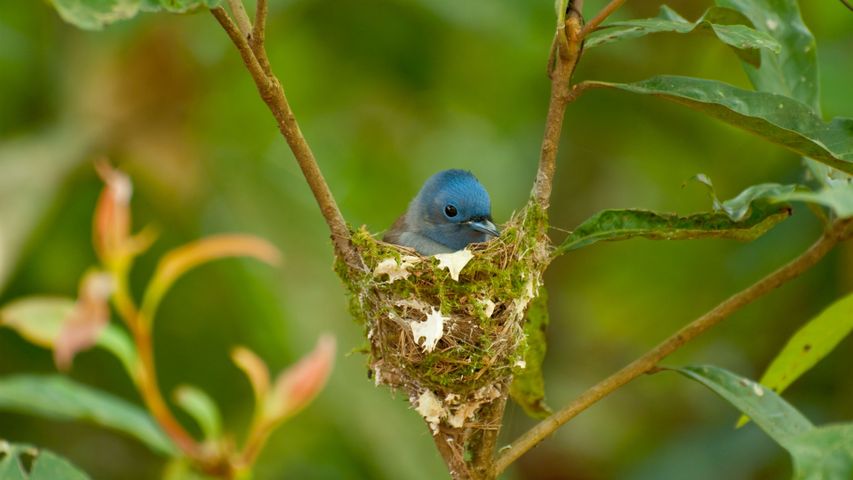A rufous-tailed hummingbird in Costa Rica
© Juan Carlos Vindas/Getty Image
Small but mighty. Let us introduce you…
Say hello to the rufous-tailed hummingbird. This female is sitting in her tiny nest. Males look similar—lots of green, just like the females, but males have a bit more glitter on the throat and breast. Both sexes have a reddish-brown (rufous) forked tail—hence, the name. Rufous-tailed hummingbirds are found in forests, gardens, and coffee plantations from southern Mexico down to the northern edge of South America, and they play an important role in pollination. Not to be confused with the smaller rufous hummingbird, which migrates through North America, the rufous-tailed is medium-sized and, like most hummingbirds, is very territorial when it comes to protecting its favourite feeding spots.The females are the nest-builders of the pair, creating tiny cups out of plant fibers, cobwebs, lichen, and moss. Females usually lay two eggs, which take between 15 and 19 days to hatch. The chicks will fledge, or get their flying feathers, about 20 days later. But they won't be fully independent from mom until they're about 50 days old. And dad? He doesn't participate in chick-rearing.
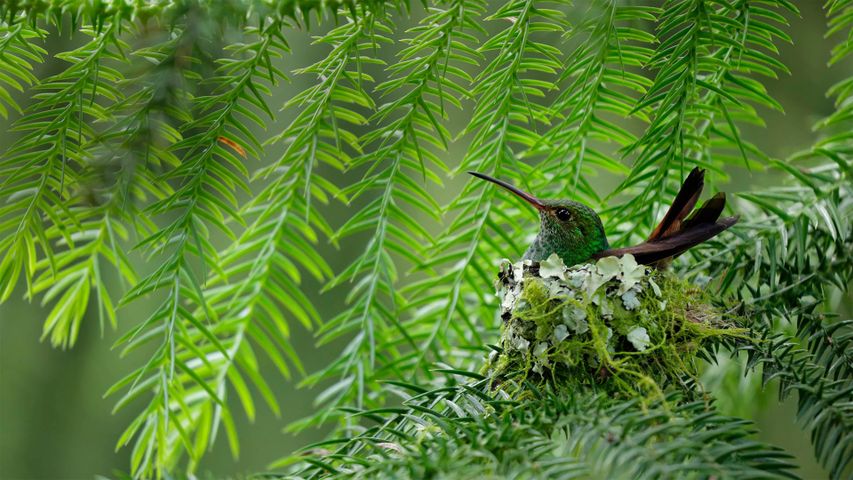
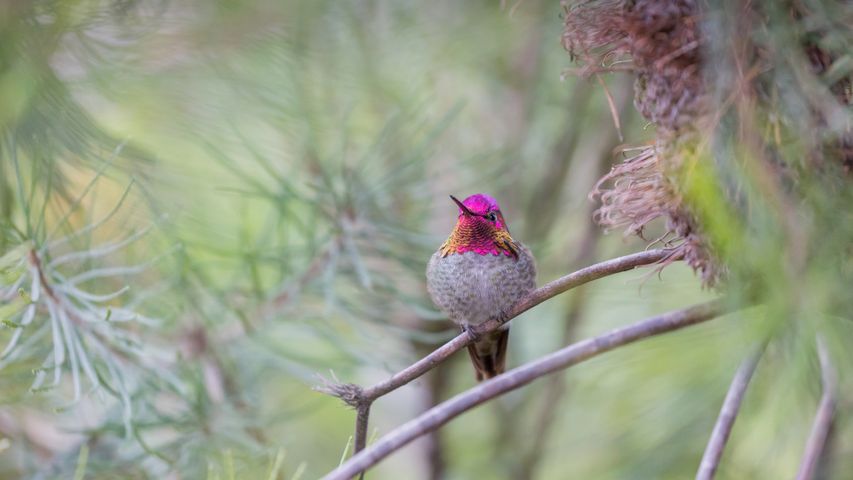 Anna's hummingbird, Santa Cruz, California, USA
Anna's hummingbird, Santa Cruz, California, USA
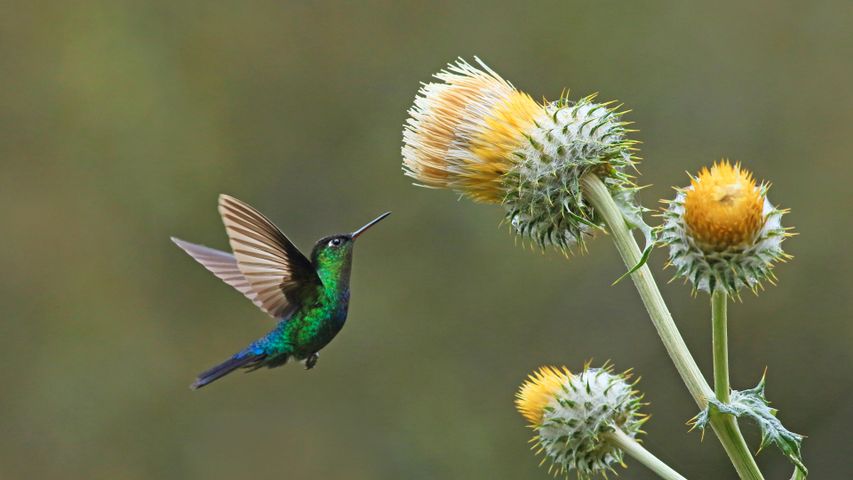 Green-crowned brilliant hummingbird with giant thistle, Cerro de la Muerte, Costa Rica
Green-crowned brilliant hummingbird with giant thistle, Cerro de la Muerte, Costa Rica
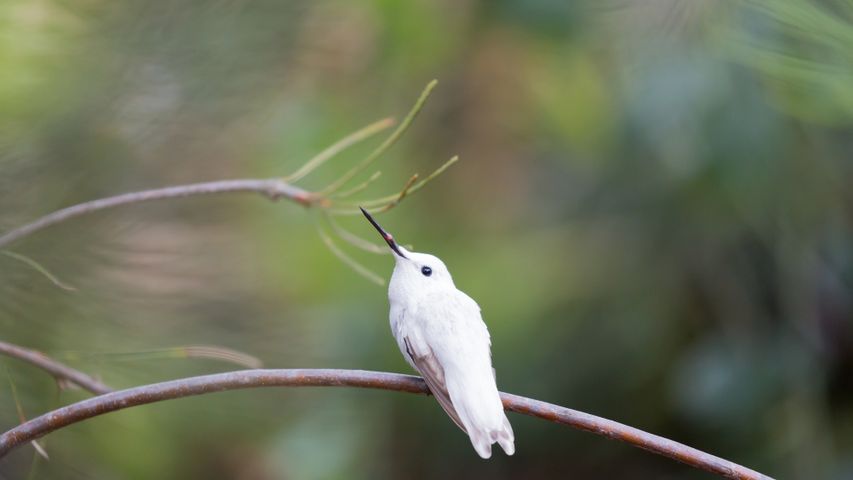 Leucistic Anna's hummingbird in the Australia Garden, UCSC Arboretum, Santa Cruz, California
Leucistic Anna's hummingbird in the Australia Garden, UCSC Arboretum, Santa Cruz, California
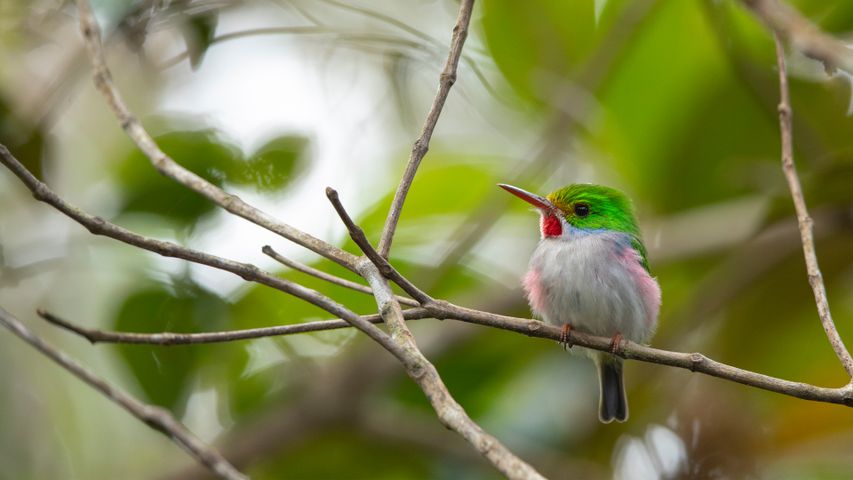 Cuban tody, Alejandro de Humboldt National Park, Cuba
Cuban tody, Alejandro de Humboldt National Park, Cuba
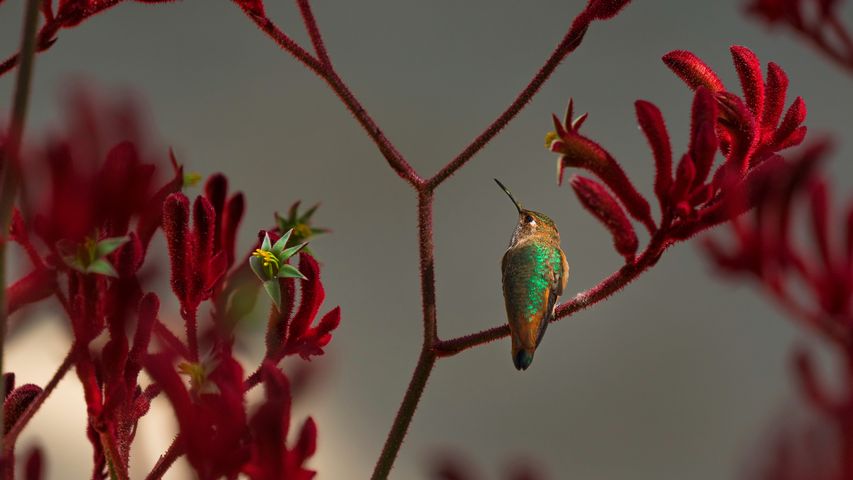 Allen's hummingbird perched on a red kangaroo paw plant
Allen's hummingbird perched on a red kangaroo paw plant
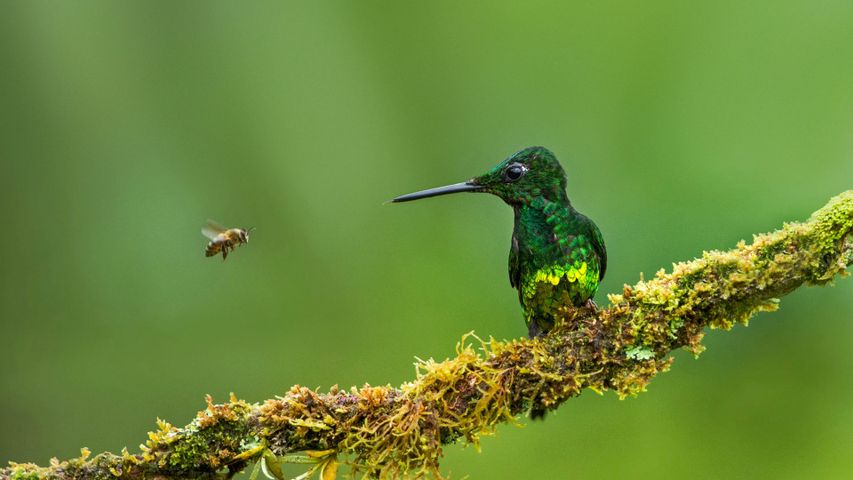 Empress brilliant hummingbird and a bee in Colombia
Empress brilliant hummingbird and a bee in Colombia
 European bee-eaters in the Extremadura region in Spain
European bee-eaters in the Extremadura region in Spain
